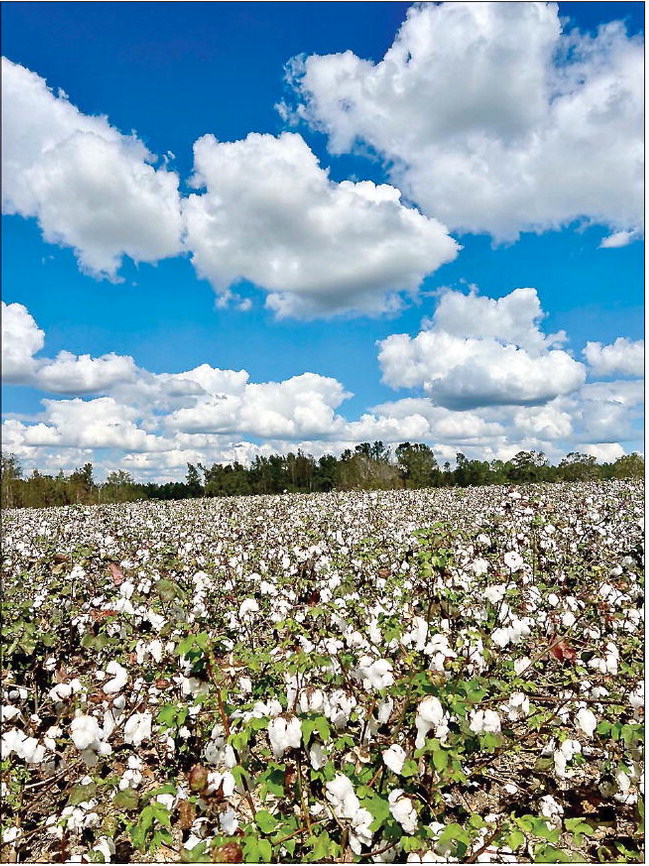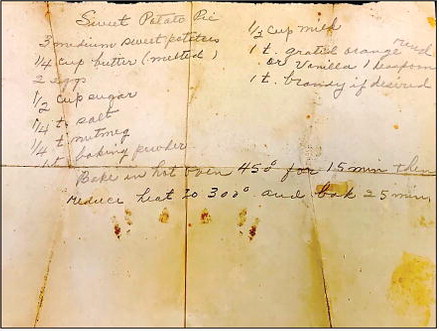Cotton Fields


It looks like freshly fallen snow — the acres and acres of cotton fields in Toombs, Tattnall and Candler Counties that I pass when I’m in the area visiting my mother in the autumn. Like a moth to a flame, I’m drawn to the fields — can’t look away from them and can’t stop myself from pausing to take it all in.
“What are you doing?” Mom asked me a few weeks ago, as I pulled off Pine Grove Church Road and into an access drive near where Linda Sikes once lived.
“I’m pulling off the road to get a closer look at this beautiful cotton field,” I said, putting the car into park and climbing out of the driver’s side door.
I bent down and examined it, touched it and took a photo of it. It’s one of the loveliest sights to see in Georgia — pure-white, fluffy cotton against a deep blue sky on a clear fall day. The white bolls dancing in the autumn breeze stir my soul, connecting me to a heritage that runs as deep as roots in the Georgia soil itself.
My relationship with cotton is generational, though my hands have never pulled a single cotton fiber from its thorny stem for money. Both my parents spent some of their childhood years in those white fields, their young fingers growing calloused from the repetitive motion of picking cotton on my grandparents’ farms (Henry and Maggie Lanier’s farm outside of Metter and Hub and Ona Jarriel’s farm outside of Collins). They would often share stories of those long days under the hot Southern sun — tales that painted pictures of early mornings, late afternoons and aching backs.
Cotton’s history in Georgia runs deep, once earning our state the nickname “The Empire State of the South,” back in the antebellum period. The invention of Eli Whitney’s cotton gin in 1793 near Savannah revolutionized the industry, transforming cotton into an economic backbone of the region. However, this prosperity often came at a terrible human cost through the institution of slavery, a dark chapter in America’s history. Yes, some of my ancestors on my mother’s side of the family owned slaves, as recorded in a few slave registries and wills I’ve come across through the years in my genealogical research. I can’t change the past.
When my parents were young in the 1930s, 1940s and 1950s, cotton was still being produced, even after the boll weevil’s terrifying arrival. Indeed, Mom often cites a song that was popular when she was young about the boll weevil, also known as the “bo weevil.”
Well, I saw the bo weevil, Lord, a-circle, Lord, in the air, Lordy The next time I see’d him, Lord, he had his family there, Lordy
And cotton has also weathered concerns about sustainable farming practices. As a result, there were several years that I didn’t see much cotton, but it’s back again. Today, Georgia is one of the nation’s leading cotton producers (in 2023, our state produced over two million bales), with modern farmers using GPSguided harvesting machines instead of hand-picking, causing us to say each year, “Wow, there’s still a lot of cotton out there, isn’t there? Those machines sure do leave a lot.”
Shifting from the fields and into my closet and chest of drawers, there’s nothing quite like the comfort of a well-worn cotton t-shirt or the crisp feel of fresh cotton sheets. I find myself checking labels, invariably drawn to items made from natural fibers like cotton and hoping they’re crafted from Georgia-grown fibers. Cotton garments are perfect for our humid Southern climate, and for me, there’s something immensely satisfy- continued from page
ing about wearing a piece of my agricultural heritage.
Related to okra and hibiscus plants, cotton is more than a commodity or crop. It’s a thread that represents both a past and a present — my family’s heritage and my affection for those snow-white fields and breathable fabrics.
And so, I’ll continue to stop by the roadside and gaze out at the fields. Cotton is part of Georgia’s identity, and cotton is part of my identity, too.

Cotton Field







out of
Posted on